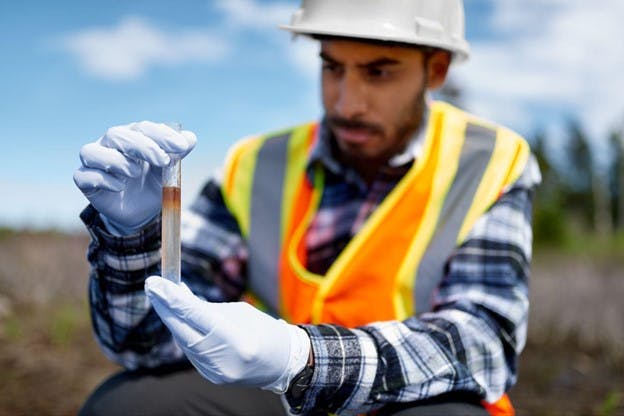🌟 New Arrival! Upgrade Your Water with Our Advanced Pitcher Filter. Shop Now
November 2023
Science-Backed Guide to San Jose Water Quality
San Jose is a city like no other. Today, it leads the charge into the future as the epicenter of Silicon Valley. With over 6,600 tech companies calling it home, it boasts the largest concentration of technological expertise of any city in the world.
But there's more to San Jose than just silicon and circuits. The city has an incredible blend of cultures, with 56 languages spoken and 40% of its 1 million residents born outside the U.S. This mix of global tech influence and cultural diversity makes San Jose a significant force internationally. Its 300 sunny days each year make it not just a hub for technological innovation but also an outdoor paradise, surrounded by parks, mountains, and the San Francisco Bay.
Yet, even a city as forward-thinking and diverse as San Jose can face challenges. With aging infrastructure, climate change, and a growing population, the city of San Jose is working hard to maintain safe drinking water.
In this article, we’re going to take a deep dive into San Jose water quality. We’ll look at what challenges the city is facing, how well they’re doing, and tell you what, if anything, you need to protect yourself from.
Where Does San Jose Water Come From?
California is full of heavily populated cities, diverse terrain, and drought-prone regions.
That means getting enough drinking water to all the places it’s needed requires some resourcefulness. San Jose is no exception.
Depending on where you are in the city, your water could come from myriad sources. Some water is purchased from Valley Water or the San Francisco Public Utilities Commission (SFPUC) while some is sourced more locally.
Here’s a look at where your water comes from based on what service area you’re in.
Evergreen
In the Evergreen area, the San Jose Municipal Water System delivers treated surface water obtained from Valley Water. This water is predominantly imported from the Sacramento-San Joaquin Delta watershed through the South Bay Aqueduct, Lake Del Valle, and San Luis Reservoir. Locally, water is also sourced from Anderson and Calero Reservoirs and treated at the Santa Teresa Water Treatment Plant in San Jose.
North San José and Alviso
For residents in North San José and Alviso, the Municipal Water System gets much of its water from the San Francisco Public Utilities Commission (SFPUC). This treated SFPUC water is sourced mainly from the Hetch Hetchy Watershed. Snowmelt flows down the Tuolumne River before being stored in the Hetch Hetchy Reservoir. Supplemental water also comes from local watersheds in Alameda and Santa Clara Counties and undergoes treatment at the Sunol Valley Water Treatment Plant.
Edenvale and Coyote Valley
In Edenvale and Coyote Valley, groundwater serves as the primary water source. This water is part of the Santa Clara Valley Groundwater Basin, which supplies roughly half of the county's water needs.
Is San Jose, CA Tap Water Safe to Drink?
According to San Jose’s Water Quality Report and the U.S. Environmental Protection Agency (EPA), San Jose’s tap water is safe to drink. It’s important to note that meeting regulatory standards doesn’t always mean water is safe.
All public water systems in the United States are given minimum quality standards for safety they must meet. These standards are based on staying within the legal limits for about 90 water contaminants. While 90 may sound like a lot, there are thousands of potential contaminants out there that we don’t know much about and don’t test for.
As our understanding of these chemicals grows, so does our need to expand regulations. Chemicals like chromium-6 and PFAS, which have been in our water for years, are suddenly being regulated due to the dangers we are just learning about them.
Of the contaminants that are regulated, many experts argue the limits imposed aren’t low enough for safety based on our current understanding of them. According to the Environmental Working Group (EWG), a D.C.-based water watchdog, EPA regulation lags behind the most recent recommendations from scientists for safe drinking water.
What Chemicals Are in San Jose Water?
While San Jose water quality meets legal guidelines for the following chemical contaminants, they are all too high according to many scientists. Here’s how their concentrations compare to current safety recommendations according to the EWG.
Haloacetic Acids (HAA5)
HAA5 is made up of five haloacetic acids: monochloroacetic acid, dichloroacetic acid, trichloroacetic acid, monobromoacetic acid, and dibromoacetic acid. These chemicals are known as disinfection byproducts, as they result from disinfectants like chlorine interacting with organic matter in water. Long-term exposure to HAA5 can lead to cancer.
Levels of HAA5 in San Jose water have exceeded what the EWG recommends for safety by 139 times:
- EPA maximum allowance: 60 parts per billion (ppb)
- EWG recommended maximum: 0.1 ppb
- San Jose maximum contaminant level: 13.9 ppb
Haloacetic Acids (HAA9)
HAA9 includes all of the contaminants from HAA5 but adds bromochloroacetic acid, bromodichloroacetic acid, chlorodibromoacetic acid, and tribromoacetic acid. These are also disinfection byproducts and are also cancer-causing.
Levels of HAA9 in San Jose water have exceeded what the EWG recommends for safety by 276 times:
- EPA maximum allowance: No legal limit
- EWG recommended maximum: 0.06 ppb
- San Jose maximum contaminant level: 16.5 ppb
Total Trihalomethanes (TTHMs)
TTHMs — like the haloacetic acids above — are formed when chlorine interacts with organic compounds in drinking water. They’re also known to be carcinogenic. This category is made up of four chemicals: chloroform, bromodichloromethane, dibromochloromethane, and bromoform.
Levels of TTHMs in San Jose water have exceeded what the EWG recommends for safety by 231 times:
- EPA maximum allowance: 80 ppb
- EWG recommended maximum: 0.15 ppb
- San Jose maximum contaminant level: 34.6 ppb
Chromium (Hexavalent)
Chromium is another common contaminant found in U.S. water supplies. It can occur naturally but is also an industrial pollutant. Although it’s known to be a carcinogen, this contaminant is still unregulated by the EPA.
Chromium levels in San Jose water have exceeded what the EWG recommends for safety by 98 times:
- EPA maximum allowance: No legal limit
- EWG recommended maximum: 0.02 ppb
- San Jose maximum detected level: 1.96 ppb
Nitrates
Nitrates usually end up in water supplies through stormwater runoff from fertilizers, but they can also come from septic tanks. They can cause oxygen deprivation in infants and increase the risk of certain cancers.
Nitrate levels in San Jose water have exceeded what the EWG recommends for safety by 24 times:
- EPA maximum allowance: 10 parts per million (ppm)
- EWG recommended maximum: 0.14 ppm
- San Jose maximum detected level: 3.32 ppm
Radium
Radium is a radioactive heavy metal found both in nature and as a byproduct of oil and gas production. Radium is a known carcinogen. Legal limits for radium are measured in picocuries per liter (pCi/L), which is a measure of radioactivity.
Radium levels in San Jose water have exceeded what the EWG recommends for safety by 5.1 times:
- EPA maximum allowance: 5 pCi/L
- EWG recommended maximum: 0.05 pCi/L
- San Jose maximum detected level: 0.25 pCi/L
Perfluorooctanoic acid (PFOA)
PFOA is a member of a group of chemicals used in non-stick products and in firefighting foams on military bases. They are known as forever chemicals since they don't break down in the environment or in our bodies. Known to cause endocrine disruption, accelerated puberty, thyroid changes, liver and immune system damage, and cancer, the U.S. EPA is now proposing limits in drinking water.
PFOA levels in San Jose water have exceeded what the EWG recommends for safety by 9.6 times:
- EPA proposed legal limit: 4 parts per trillion (ppt)
- EWG recommended maximum: 0.007 ppt
- San Jose maximum detected level: 0.067 ppt
Is San Jose Water Hard Water?
Yes. San Jose has hard to very hard water as most of it comes from groundwater sources.
Water hardness is a measure of dissolved calcium and magnesium ions in water. The higher the concentration, the harder the water is. While hard water is not dangerous to ingest, it can wreak havoc on your home’s plumbing, water-using appliances, clothes, and your skin. It can also make cleaning your home much more difficult.
Hard water minerals stick to surfaces and are almost impossible to clean. They also combine with soap to form soap scum. Not only does this stick to your surfaces and skin, but it means you have to use far more soap to get a good lather.
Because San Jose’s water comes from so many sources, it’s hard to know exactly how hard the water coming from your tap is from day to day. However, most of San Jose’s water comes from groundwater sources that measure anywhere from 11 to 26 grains per gallon (gpg). Anything over 7 gpg is considered hard water, with anything over 10 gpg considered very hard water.
Normal water filtration does not get rid of hard water minerals, so make sure to use a water softener or a salt-free water conditioner.
Is San Jose Water Fluoridated?
Yes. Like many cities in the United States and Canada, San Jose adds fluoride to their water during the water treatment process. Water fluoridation, or the addition of fluoride to drinking water, is a public health initiative to decrease dental cavities and strengthen tooth enamel in kids and adults. San Jose estimates that every $1 spent adding fluoride to water saves $120 in dental treatment.
While many households welcome the benefits of fluoride in their water, some would rather have control over the amount of fluoride they use. Fluoride can also be known to cause fluorosis (tooth mottling and discoloration) in infants and toddlers.
If you’d rather filter fluoride out of your water, it’s important to know that carbon water filters and boiling water won’t remove it. To remove fluoride from your drinking water, you’ll need to use a reverse osmosis water filter instead.
Get the Best Quality Water in Your San Jose Home
Silicon Valley leads the world in technological innovation, but San Jose has some issues to work on when it comes to their drinking water. San Jose water quality has elevated levels of chromium-6, disinfection byproducts, and PFAS.
If you want better tasting clean water straight from your San Jose tap, HomeWater can make it happen. HomeWater's UPSTREAM 4-Stage Whole Home Water Filters can improve your water quality by removing impurities like sediment, chloramines, DPBs, PFAS, microplastics, heavy metals like chromium, and more. You can even attach a salt-free water conditioner and make your hard water problems go away for good.
Make your San Jose water quality better with HomeWater.


